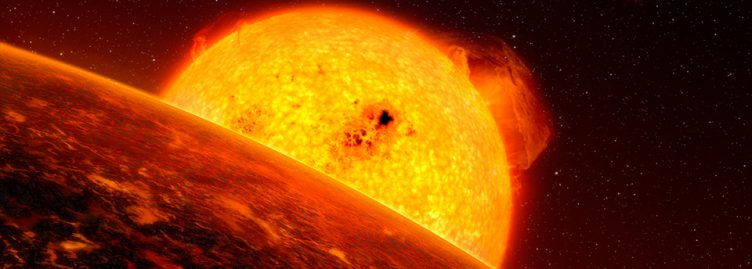In two recently published articles1,2, researchers from Instituto de Astrofísica e Ciências do Espaço (IA) show that the ratio of some heavy elements in a star, like Magnesium (Mg), Silicon (Si) and Iron (Fe), have a crucial influence in the composition of rocky exoplanets.
In several previously published articles, it is suggested that the ratio of Fe, Mg and Si in the Sun is similar to that of the Earth, Venus, Mars and some meteorites. Thus, in the Solar System, the relative abundance of these elements in the Sun’s photosphere3 can be used to derive the composition and structure of rocky exoplanets.
IA’s team used high resolution spectra, from different telescopes, to determine the stellar parameters and ratios of several these elements, in three stars with known exoplanets – CoRoT-7, Kepler-10 and Kepler-93. Results show that, in the analyzed exoplanets and their host-stars, we see the same type of relation that was measured between the chemical compositions of Solar System bodies.
Notes:
- The article “Constraining planet structure from stellar chemistry: the cases of CoRoT-7, Kepler-10, and Kepler-93” was published in Astronomy & Astrophysics.
- The article “From stellar to planetary composition: Galactic chemical evolution of Mg/Si mineralogical ratio” was published in Astronomy & Astrophysics.
- The Photosphere, commonly known as the Sun’s visible surface, is a region about 500 km thick, with a temperature around 5500 degrees Celsius.


